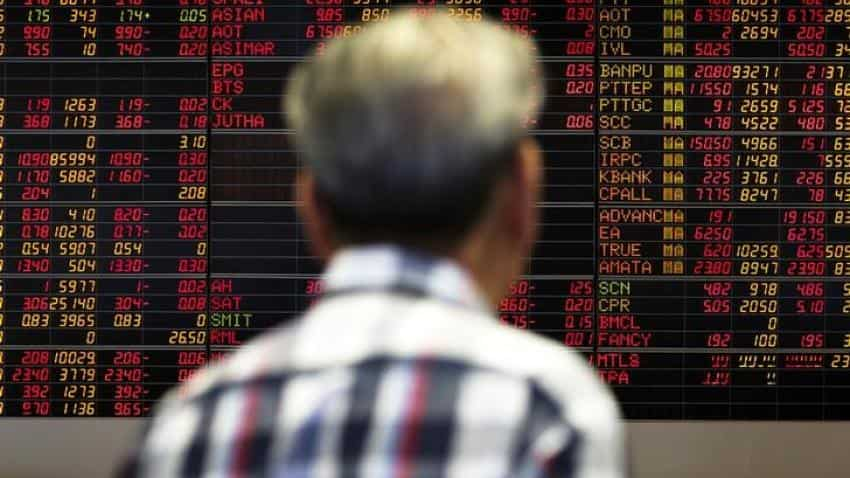Asia marketss lag Wall Street amid dollar strength
Markets from Argentina to Turkey have been under intense pressure, in part because many of these countries have large amounts of U.S. dollar debt which gets more expensive to finance as the currency rises.

Asian shares crept higher on Monday after a tame reading on U.S. wages lessened the risk of faster rate hikes by the Federal Reserve, although Sino-U.S. trade tensions and a looming deadline for the Iranian nuclear deal argued for caution. The week ahead also has important readings on the health of the Chinese economy, and hence global demand, as well as the latest data on U.S. consumer price inflation.
The early action was limited with MSCI’s broadest index of Asia-Pacific shares outside Japan up 0.2 percent.
Japan's Nikkei was flat, while Australian stocks added 0.3 percent. E-Mini futures for the S&P 500 also inched up 0.2 percent.
Friday’s U.S. jobs report showed unemployment dropping to a new cycle low of 3.9 percent yet wages remained benign, suggesting the Federal Reserve would keep raising rates but at a gradual pace.
That outlook cheered Wall Street where the Dow .DJI ended Friday up 1.39 percent, while the S&P 500 .SPX rose 1.28 percent and the Nasdaq .IXIC 1.71 percent.
Apple Inc hit a record high after Warren Buffett’s Berkshire Hathaway Inc disclosed that it had raised its stake in the iPhone maker.
The recent run of solid U.S. economic news contrasts with a softer turn in European data and lifted the dollar to its highest for the year so far against the euro.
The single currency was last at $1.1961, having been down as deep as $1.1911 on Friday. The dollar also reached its highest since December against a basket of currencies and was last trading at 92.576 .
It had less luck against the Japanese yen, in part because strains in emerging market currencies were supporting safe havens such as the yen. The dollar was at 109.03, having topped out around 110.05 last week.
“It’s this recovery in the U.S. dollar – one based on the data flow in the U.S. against the rest of the world – which is catching many by surprise and causing ructions across emerging markets,” said Greg McKenna, chief market strategist at CFD and FX provider AxiTrader.
Markets from Argentina to Turkey have been under intense pressure, in part because many of these countries have large amounts of U.S. dollar debt which gets more expensive to finance as the currency rises.
A firming U.S. dollar has also been negative for some commodities, with gold falling for a third straight week to last trade at $1,114.79 an ounce XAU=.
Oil, on the other hand, was near its highest in more than three years as global supplies remained tight and the market awaited news from Washington on possible new U.S. sanctions against Iran.
President Donald Trump has set a May 12 deadline for Europeans to “fix” the deal with Iran over its nuclear program or he would refuse to extend U.S. sanctions relief for the oil-producing Islamic Republic.
Brent crude futures LCOc1 added 11 cents to $74.98 a barrel, while U.S. crude CLc1 gained 9 cents to $69.81.
Get Latest Business News, Stock Market Updates and Videos; Check your tax outgo through Income Tax Calculator and save money through our Personal Finance coverage. Check Business Breaking News Live on Zee Business Twitter and Facebook. Subscribe on YouTube.
RECOMMENDED STORIES

EPFO Pension Schemes: Early pension, retirement pension, nominee pension and 4 other pension schemes that every private sector employee should know

Top 7 Mutual Funds With Highest Returns in 10 Years: Rs 10 lakh investment in No 1 scheme has turned into Rs 79,46,160 in 10 years
08:04 AM IST










 Apple issues update for Mac users targeted in zero-day cyber attack
Apple issues update for Mac users targeted in zero-day cyber attack Apple India's net profit up 23% to Rs 2,746 crore in FY24
Apple India's net profit up 23% to Rs 2,746 crore in FY24 Apple updates ‘vintage’ list with inclusion of THESE devices: Here’s how it will impact certain users
Apple updates ‘vintage’ list with inclusion of THESE devices: Here’s how it will impact certain users  Apple likely to bring AirTags 2 in 2025: Here’s what we know about major upgrades
Apple likely to bring AirTags 2 in 2025: Here’s what we know about major upgrades  Sharing files from OnePlus to iPhone is much easier now: Find OnePlus’ feat inside
Sharing files from OnePlus to iPhone is much easier now: Find OnePlus’ feat inside